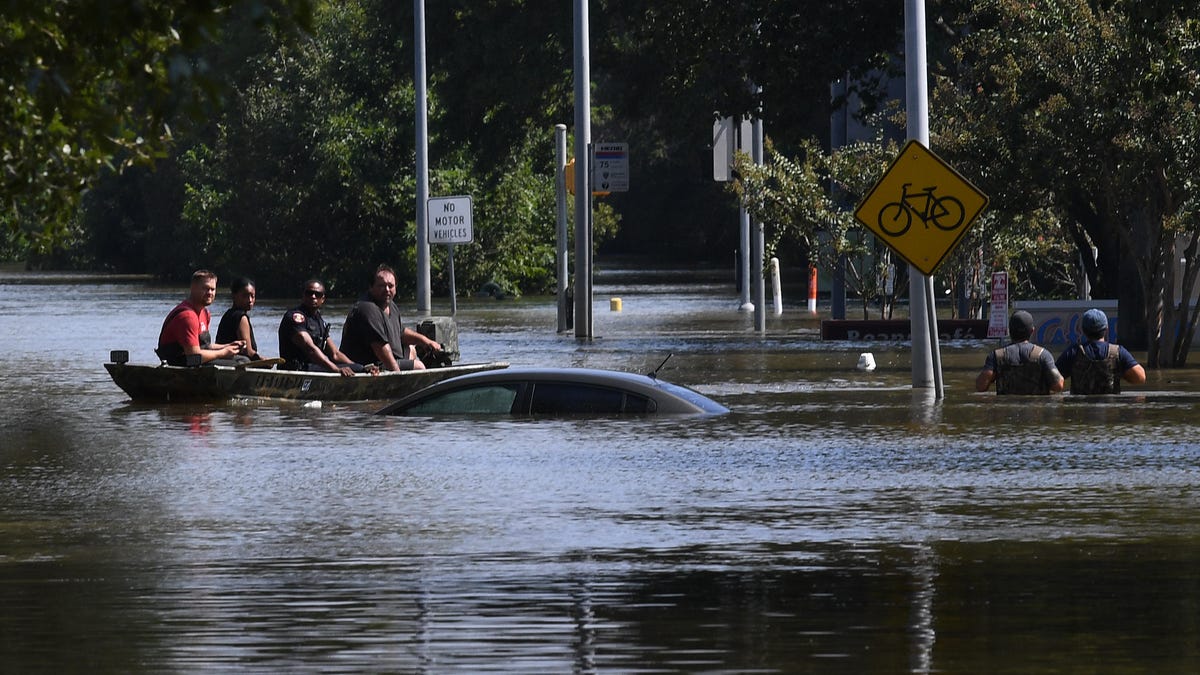 Why You Can Trust CNET
Why You Can Trust CNET Cell phones as lifelines: How to stay connected amid disaster
CNET's Marguerite Reardon offers tips on preparing your gadgets for an emergency, like a hurricane.

There's no question that mobile phones have become essential to our daily lives and that's especially true in a disaster.
As flood waters rose last weekend, victims of Hurricane Harvey didn't just overwhelm 911 call centers seeking help. They also took to social media sites like Twitter and Facebook to ask for assistance, update loved ones and seek information.
It makes sense, says University of Kentucky assistant professor Jeannette Sutton, who studies communication and the use of social media during disasters.
"In a disaster, the thing people really need, in addition to safety, food and water, is information," she said. And that is exactly what communication networks like wireless and broadband provide.
That's why experts say it's important to make sure your cell phone is charged and protected from the elements during a disaster.
For this edition of Ask Maggie, I've compiled tips and advice from major wireless carriers about how to prepare for disasters and what you should add to your emergency kits to make sure you stay connected through a big storm.
- Keep your mobile phone battery charged. High winds and flooding can knock out power for hours or even days.
- Keep extra batteries or an external charger available so you can recharge your device once it runs out of juice. You may also consider buying a charger that has a hand crank and can be used to power smartphones and other devices.
- Include wall chargers, car chargers and adapters for your phone in your emergency kit.
- Keep your mobile devices, accessories and chargers dry. The biggest threat to your device during a hurricane is water. Keep it safe from the elements by storing it in a ""="">"dry bag" or some other type of protective covering, like an Otterbox phone cover.
- Dim the background light on your screen and turn off background data applications as well as Wi-Fi and Bluetooth services to preserve battery life.
- Program your smartphone to receive emergency alerts. Wireless Emergency Alerts (WEAs) are free wireless notifications that are delivered to your mobile device by local/national public safety organizations.
- Program all of your emergency contact numbers and e-mail addresses into your mobile phone. Numbers should include the police department, fire station and hospital, as well as family members. Also, keep a written copy of this information in case your phone runs out of juice, but you're able to use someone else's device.
- Forward your home number to your mobile number in the event of an evacuation.
- Backup your contacts, photos and other information on your phone to a cloud storage service.
- Download weather applications and alerts to get forecasts and severe storm warnings.
- Download apps and subscribe to alerts from the American Red Cross and the Federal Emergency Management Agency (FEMA).
- Take pictures of your home and belongings before the storm. During and after the storm, document any damage you see so you can share it with your insurance company.
- Set up location-tracking technology on your phone and your loved ones' devices, so you're able to track each other if you're separated during an emergency.
Wireless carriers also offer these suggestions to keep in mind during evacuations and in the immediate aftermath of a disaster when network resources will likely be taxed.
- Text instead of call. During an emergency, text messages may go through more quickly than voice calls because they require fewer network resources.
- Be prepared for high call volume. During an emergency, many people are trying to use their phones at the same time. The increased call volume may create network congestion, leading to "fast busy" signals on your wireless phone or a slow dial tone on your landline phone. If this happens, hang up, wait several seconds and then try the call again. This allows your original call data to clear the network before you try again.
- Keep non-emergency calls to a minimum and limit your calls to the most important ones.
- Use social media sparingly. While there are many stories of people posting on Twitter or Facebook asking for help during Hurricane Harvey when they couldn't get through on 911, federal emergency officials warn that people shouldn't rely on social media for help. First responders simply don't have time or resources to monitor all posts. And your request could be lost in the noise.
The Smartest Stuff: Innovators are thinking up new ways to make you, and the things around you, smarter.
Tech Enabled: CNET chronicles tech's role in providing new kinds of accessibility.

